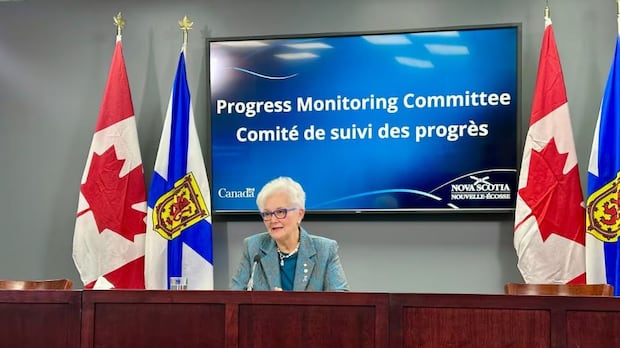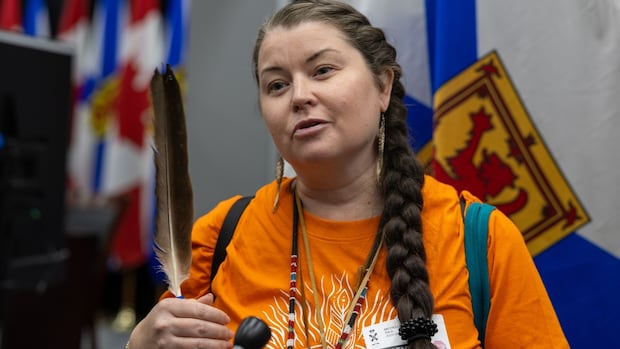Q&A: Could Toronto initiative to offer housing in some hospitals work in Nova Scotia?

As Nova Scotia continues to work on addressing homelessness in the province through tiny home neighbourhoods and Pallet shelter villages, a hospital network in Toronto is working on another housing option to help patients who are living on the street.
The housing project, known as Dunn House, is intended for people experiencing homelessness who frequently end up in the emergency room. The idea is to ease pressures on hospitals while also providing stable care for vulnerable individuals.
CBC Radio’s Mainstreet interviewed one of the doctors involved with the initiative, primary care physician Dr. Andrew Boozary on Thursday. He is the executive director of the Gattuso Centre for Social Medicine at University Health Network.
This interview has been edited for length and clarity.
Where did the idea for the supportive housing project called Dunn House come from?
I think it’s important to recognize that this push for housing, this push against the homelessness crisis … has always been there in and from communities right across the country that have been seeing the worsening impacts of homelessness, of precarious housing. And it’s been something that we’ve been recognizing more and more in the health-care system over the last few decades.
But what it’s really about is what drives health outcomes or what factors drive really poor health outcomes or to be quite frank, drive death and earlier deaths. And housing is one of the most powerful determinants of health.
And when we look at some of the other health-care implications for people who are being unhoused, their costs can be seven times the general public, not because people want to be coming into the health-care system or into the emergency department, but because they’re getting sicker and sicker with nowhere to be able to stay or no stable housing.
Why do you think it’s taken so long for people to bring both of those things together and realize that one impacts the other and that you need to support both?
I think it’s important to recognize that people working in various domains are doing the best that they can and turn to the best they can for the patient, caregiver, the client that’s in front of them, whether in [a] health-care setting or a community.
But from a system piece, you know, we have not really been integrating both our thinking or widening our notions of what drives health. And part of this is when we talked about access to health care or when we saw what was actually covered in the ’60s and ’70s beyond, it was about hospitals and access to doctors and nurses being sort of the totality of what we cover as part of universal health care. And I think especially over the last many years, especially for the past five years, that notion has been upended.
Who did you have to partner with and work with to make this long-term housing support?
The power of partnership, I think, is what Dunn is about, and it was with the City of Toronto and the United Way of Greater Toronto from a community perspective, from the municipal perspective. But ultimately we’re able to see really important investments from every level of government, from the provincial government, the federal government, part of the rapid housing initiative, and engaging people with lived experience of homelessness and lived expertise of what people would want to see and need to see in a housing setting to thrive or to regain their own definitions of health and well-being.
Mainstreet NS12:32Toronto hospital partnered with a housing organization to create 51 permanent supportive housing units
Mainstreet’s Alex Guye has been looking at the lack of intersecting support for those among us who are confronted by homelessness, mental illness and substance use. This is her latest instalment, featuring Dr. Andrew Boozary of University Health Network in Toronto.
What does supportive housing in this context actually look like?
There’s a primary care space right on the first floor. There’s also clinic rooms for counselling or access to psychiatry. And these are the myriad of services that are there to a community kitchen, which the United Way working with [social service organization] Fred Victor is ensuring is in place. So really the hospital is not going to be the operator.
What exactly were you seeing in this group of people that kind of prompted that there needed to be long-term support like this?
When I reflect on what is playing out, [it] is really about survival. That people have been pushed to very desperate measures of where and how they can live. And the reality is that people cannot get well.
What I do think about Dunn House that I hope tries to advance the conversation, it’s what does the holistic health and social supports look like for people who have been unhoused for decades? You’re not going to reverse all of these terrible health conditions that have played out overnight at Dunn House. But the hope is that over the period of time, people can start to bend their own health trajectories in the way that they choose.
For groups thinking of trying to start something like this, where would you recommend that they start?
Well, I think the partnership piece is really crucial, of getting together with different casts of institutions and organizations. You know, and I think trying now to look at this as more of a guide of how we need different levels of government together.
In terms of what you know could possibly be done and where and what will work best for a certain community or neighbourhood, it’s going to look different.
But given how urgent the needs are, and given how chronic of a crisis this has become, I would argue we need new playbooks and new sets of terms of engagement to really push policymakers and decision makers on a different way of addressing a public health crisis.




